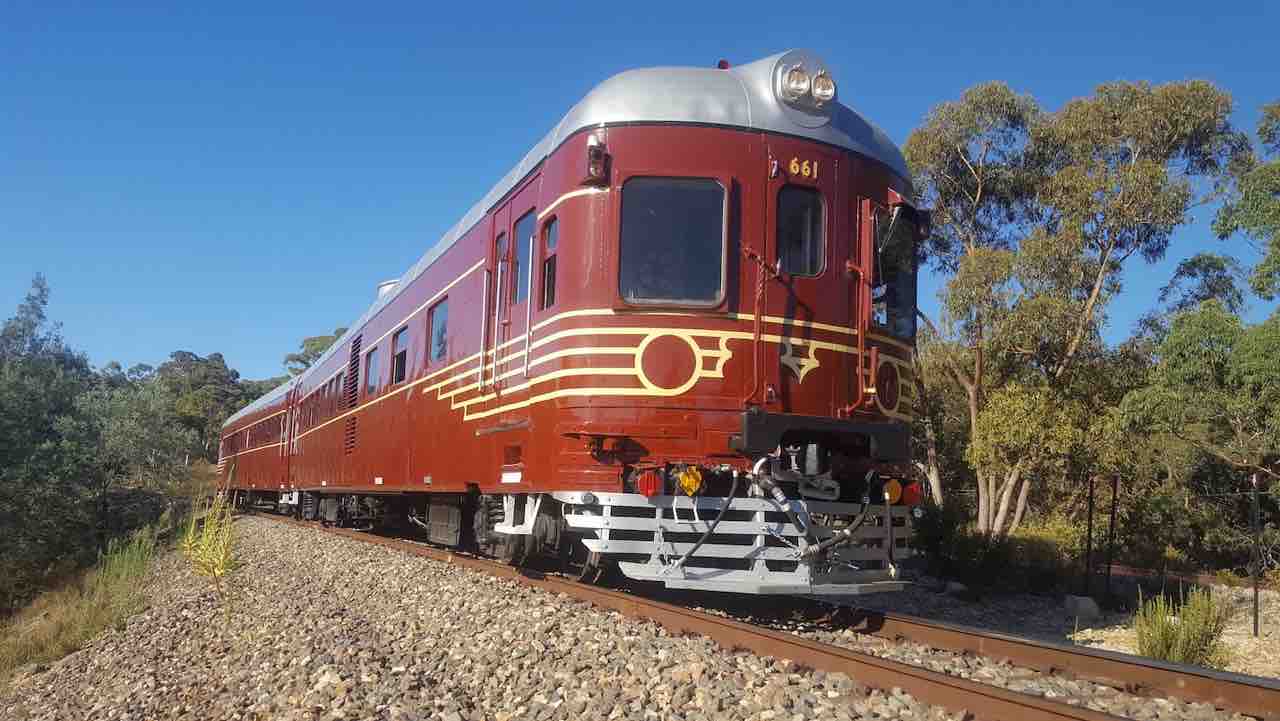A world first solar train – featuring flexible solar panels from PV pioneer Zhengrong Shi’s new venture and a considerable amount of battery storage – is about to hit the tracks of a long disused rail line in Byron Bay, and could be in operation by the end of the year.
The Byron Bay Railroad Co – a not for profit company owned by former coal baron Brian Flannery linking his Elements of Byron resort north-west of Byron with the town centre – will take delivery of the solar train in the next week or two.
It will follow a tortuous two-day journey by truck (tortuous because it has to avoid low-height bridges) from Lithgow, where it has been fitted out with eArche solar panels and battery storage.
The two carriage train, featuring 1960s vintage country commuter cars, was to be powered by diesel, but the owners opted for the solar and storage option after it became clear that the community didn’t want a big diesel engine chugging through the township.
The train – running on a 3km section of the now disused Casino-Murwillimbah line – will feature 6.5kW of lightweight and flexible solar panels manufactured by SunMan, the first major new venture from Dr Shi since the financial collapse of Suntech a few years ago.

A further 30kW of solar has been installed at the main station (pictured above), located near the Elements resort owned by Flannery and his wife Peggy. The train will carry 77kWh of Kokam batteries, about the same as a Tesla Model S.
Nick Lake, from Nickel Energy, and one of the key consultants to the project, says the train will run entirely on solar power. The 20-minute wait scheduled into each hour of the timetable will be time enough to inject another 13kWh on each occasion into the battery storage, and the flexible solar panels will also charge the batteries.
“There was fair bit of community resistance to the idea of a diesel train,” Lake told RenewEconomy. “So we started exploring what the options were. We looked at how much power was needed, noted it was a flat run, and that helped size the electric motors.
“Once we knew the size of motors, we could work out energy demand and we came to realise we could have enough solar to match that.”
The 30KW solar system on the main station roof will provide more than enough power, and will export to the grid on most days.
The train will likely come into heavy use during the various festivals held in and adjacent to the Elements resort, including the Byron Writers Festival and the Byron Food and Beverage Festival.
Elmofo, a Newcastle based company owned by Brett Sutherland, who is known for having converted an old Delorean car into an EV, and for racing EVs until competition authorities extended the length to force him to recharge, led the motor drive system for the train.
Lake says the eArche solar panels were chosen because putting in a “canopy” style installation would not be in keeping with the look or heritage of the trains. The eArche panels are flexible, could be adapted to fit the shape of the carriage roof, and are one of the first installations of the new panels, launched by Dr Shi in March.
“We’ve spent the last few months assembling the battery, putting the solar on roof, and installing the drive system in the old mine railway worksop in Lithgow,” Lake says.
“The final pieces are going in today,” he said. Once in Byron Bay, the train will spend a month of testing and training and commissioning. It is expected to start passenger runs before the end of the year.
A spokesperson for the Elements said the Flannerys did not wish to contribute further to the traffic congestion that Byron experiences during peak season.
“Brian saw the railway line which connected the North Beach area – with the Sunrise residential community and the Byron Arts Estate – to Byron township.
“He requested that the Development Director for North Byron Beach Resort Jeremy Holmes investigate reactivating the rail corridor. It soon became apparent that locals were struggling with public transport between the North Beach precinct and Byron township.
“So these were the first two reasons. To alleviate traffic congestion and provide an affordable public transport solution. The solar conversion concept came later, after the train was already planned.”












